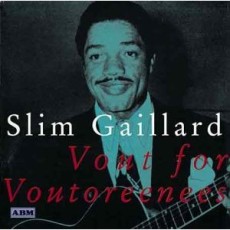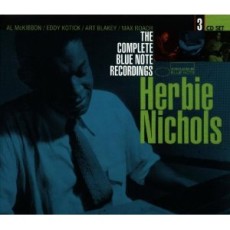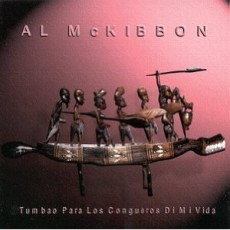
Daily Dose Of Jazz…
Bulee “Slim” Gaillard was born on January 4, 1916 in Santa Clara, Cuba. His childhood in Cuba was spent cutting sugarcane and picking bananas, as well as occasionally going to sea with his father. At age 12, he made his way to America settling in Detroit. A move to New York City in the late 1930s saw Gaillard’s rise to prominence as part of Slim & Slam, a jazz novelty act he formed with bassist Slam Stewart. Their hits included “Flat Foot Floogie”, “Cement Mixer” and the hipster anthem, “The Groove Juice Special”.
Gaillard’s appeal was that he presented a hip style with broad appeal, was a master improviser whose stream of consciousness vocals ranged far afield from the original lyrics along with wild interpolations of nonsense syllables. Gaillard could play several instruments, such as guitar and piano and always managed to turn the performance from hip jazz to comedy.
In the late forties and early fifties, Gaillard frequently opened at Birdland for such greats as Charlie Parker, Flip Phillips and Coleman Hawkins. Slim composed theme songs for radio shows, appeared in several shows in the 1960s and 1970s, such as Charlie’s Angels, Mission Impossible, Along Came Bronson and Roots: The Next Generation. By the early 1980s he was touring the European jazz festival circuit, playing with such musicians as Arnett Cobb.
Slim Gaillard, singer, songwriter, pianist, guitarist and actor noted for his vocalese, spoke 9 languages including “Vout”, a language he constructed out of word play and created a dictionary, passed away on February 26, 1991 in London, England at the age of 75.

Daily Dose Of Jazz…
Herbie Nichols was born in San Juan Hill, Manhattan, New York City on January 3, 1919. His first known work was with the Royal Barons in 1937, a few years later performing at Minton’s Playhouse but he did not find a very happy experience due to a competitive atmosphere that did not suit his personality.
Nichols was drafted into the Infantry in 1941. After the war he worked in various setting, beginning to achieve some recognition when Mary Lou Williams recorded some of his songs in 1952. He befriended Thelonious Monk and from about 1947 persisted in trying to persuade Alfred Lion at Blue Note to sign him. Lion finally acquiesced and between 1955 and 1956 Herbie recorded less than half his 170 compositions that produced three albums, with other tracks from these sessions not being issued until the 1980s.
As a player he was capable not only of dark lyricism but also of writing melodies so harmonically adventurous that placed his music in a rhythmic league of its own. Nichols was indeed fortunate in the drummers with whom he worked Art Blakey and Max Roach. As a composer he penned such notable standards as “Serenade” that had lyrics added as well as “Lady Sings The Blues” that became synonymous with Billie Holiday, to which she set lyrics and adopted the title for her autobiography.
Jazz pianist and composer Herbie Nichols died from leukemia at the age of 44 on April 12, 1963 in New York City. Although he lived most of his life in relative obscurity, he is now highly regarded by many musicians and critics.

Daily Dose Of Jazz…
Arthur Prysock was born on January 2, 1929 on Spartanburg, South Carolina but was raised on a farm in North Carolina. He left home at 16, moved to Hartford, Connecticut and found work with an aircraft company during World War II until they discovered he was underage. He then found a day job as a cook, singing around town at night with a band.
In 1944 bandleader Buddy Johnson signed the baritone as a vocalist, singing on several Johnson hits on Decca Records and became a mainstay of the live performance circuits. By 1952 Prysock went solo, signed with Decca, recorded “I Didn’t Sleep a Wink Last Night” and in 1960s covered Ray Noble’s ballad “The Very Thought Of You” and “It’s Too Late Baby, It’s Too Late”. Signing with Verve Records he recorded “Arthur Prysock & Count Basie” and “A Working Man’s Prayer”.
In the seventies, he had a surprise disco hit with “When Love Is New” and in 1985, recorded his first new album in almost a decade, “Arthur Prysock” He gained further attention for his tender, soulful singing on a beer commercial, “Tonight, Tonight, Let It Be Lowenbrau”.
Over the course of a prolific 43-year career, Arthur, who had been influenced by Billy Eckstine, was seen primarily in front of big bands. He recorded nearly 60 albums for Mercury, Old Town, Milestone and Decca record labels, including the orated “This Is My Beloved”. In 1995 he received the Pioneer Award from the Rhythm and Blues Foundation.
His tender music has been a staple of jazz radio in the wee hours of the morning, and of cheek-to-cheek dancing in smoke-filled cocktail lounges. Arthur Prysock, the baritone romantic crooner that never lost his vocal strength, rich resonance or his deep, velvety tones, passed away on June 21, 1997.
More Posts: vocal

Daily Dose Of Jazz…
Al McKibbon was born January 1, 1919 in Chicago, Illinois but grew up in Detroit, Michigan from the age of two. Attending Cass Tech, the high school that gave the world jazz greats Gerald Wilson, J.C. Heard, Wardell Grey and other, Al focused his training on the bass, which at the time, the bass was coming into its own as a jazz instrument and replacing the tuba.
In 1947, after working with Lucky Millinder, Tab Smith, J.C. Heard, Coleman Hawkins, and as a singer with the Ted Bruckners band, replaced Ray Brown in Dizzy Gillespie’s band. He joined Miles Davis’ nonet in the Fifties recording with him as well as Earl Hines, Count Basie, Johnny Hodges, Thelonious Monk, George Shearing, and Cal Tjader, with whom McKibbon is credited with interesting Cal in Latin music while a member of Tjader’s group.
McKibbon, always highly regarded among his peers, was the chosen bassist for the “Giants of Jazz”, and continued to perform until 2004. In 1999, at age 80, he recorded his first album as a leader “Tumbao Para Los Congueros Di Mi Vida” and garnered a Grammy nomination for Best Latin Jazz Performance.
Al McKibbon, double bassist, singer and self taught dancer, who played a Jacob Steiner bass made in 1650, best known for his work in bop, hard bop, and Latin jazz, passed away on July 29, 2005.
More Posts: bass

